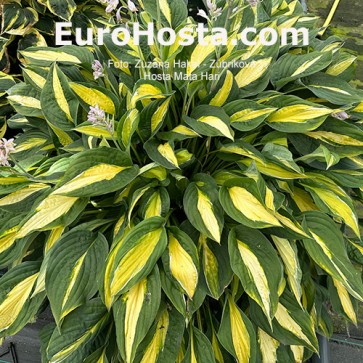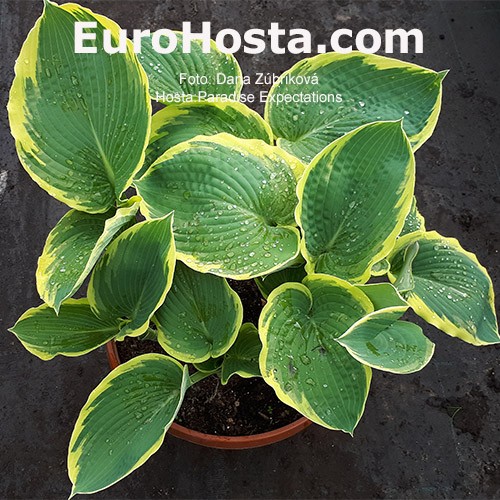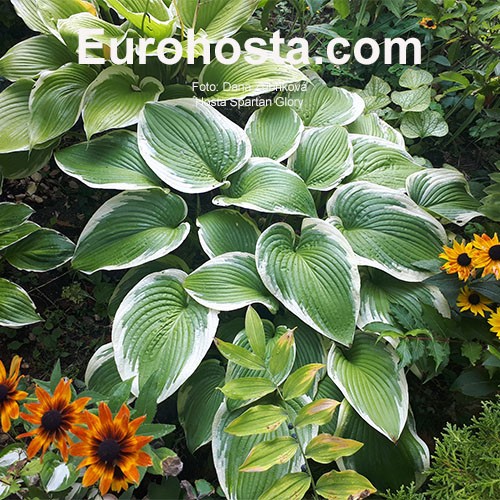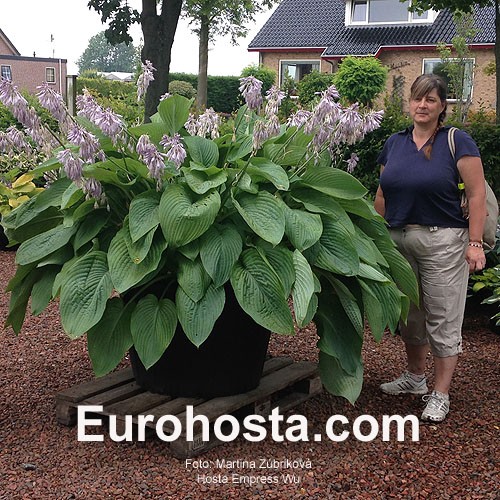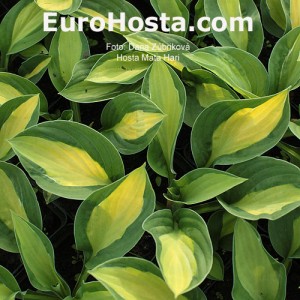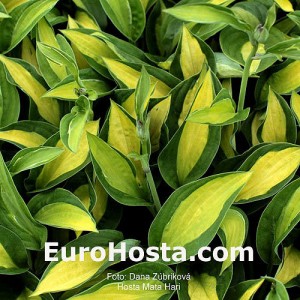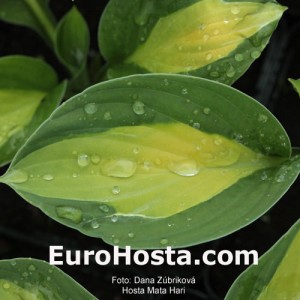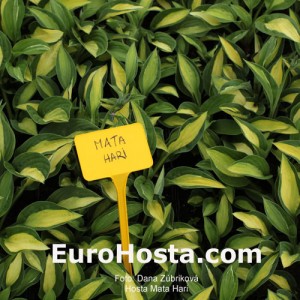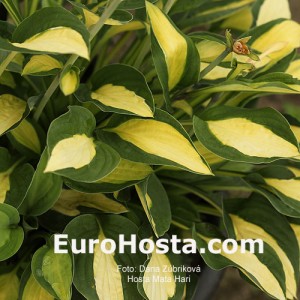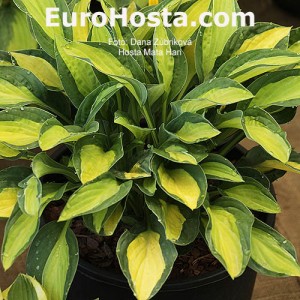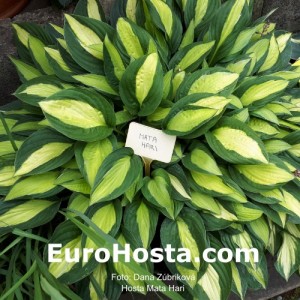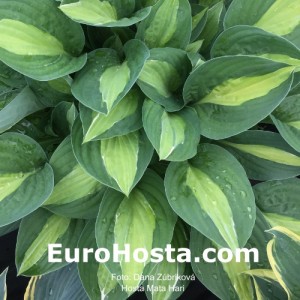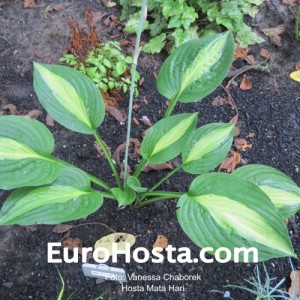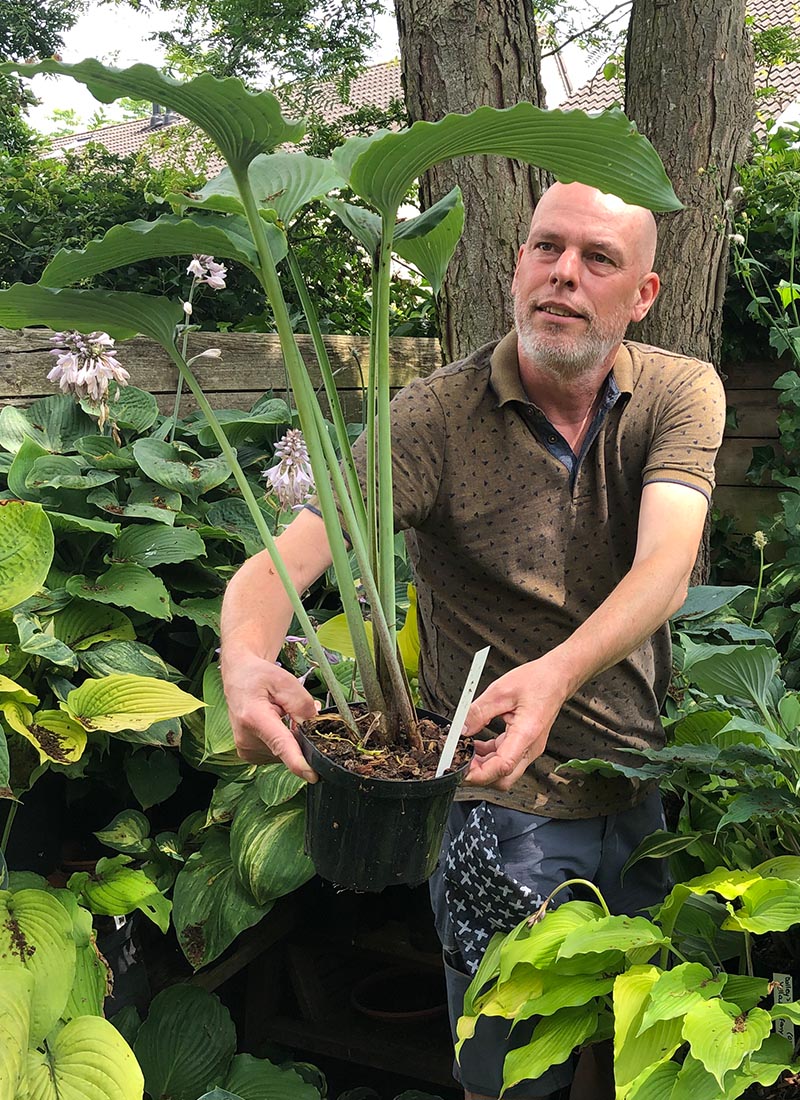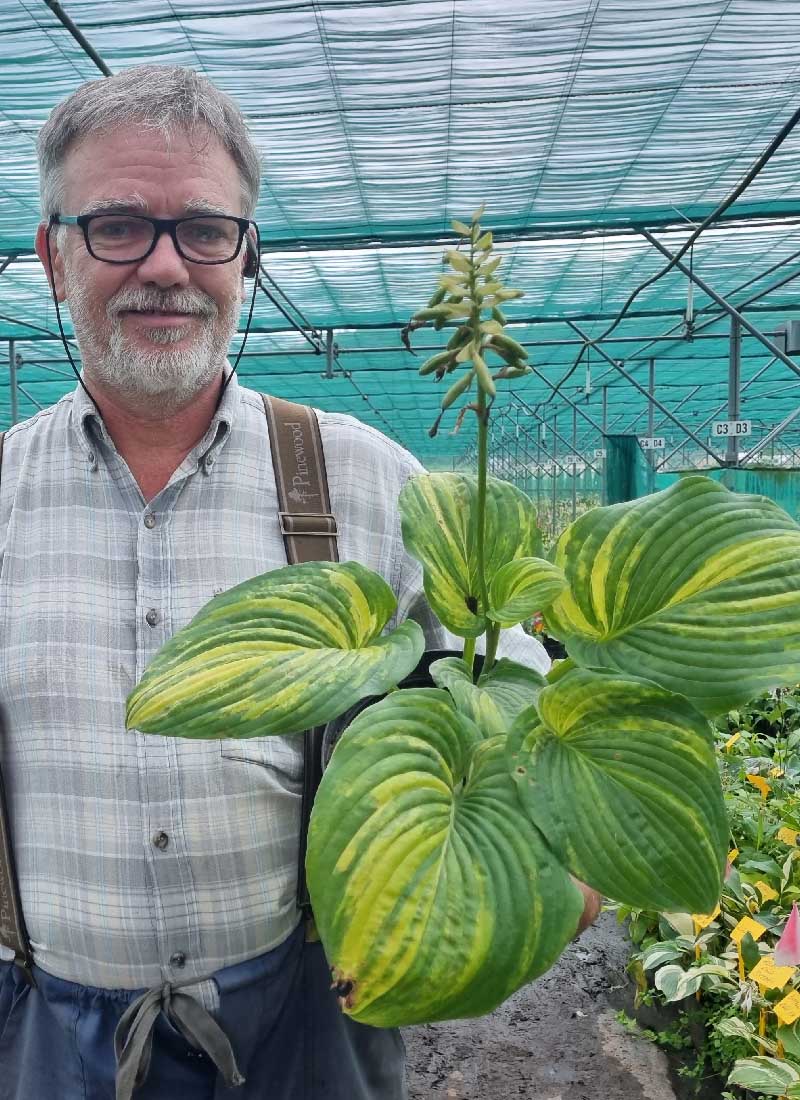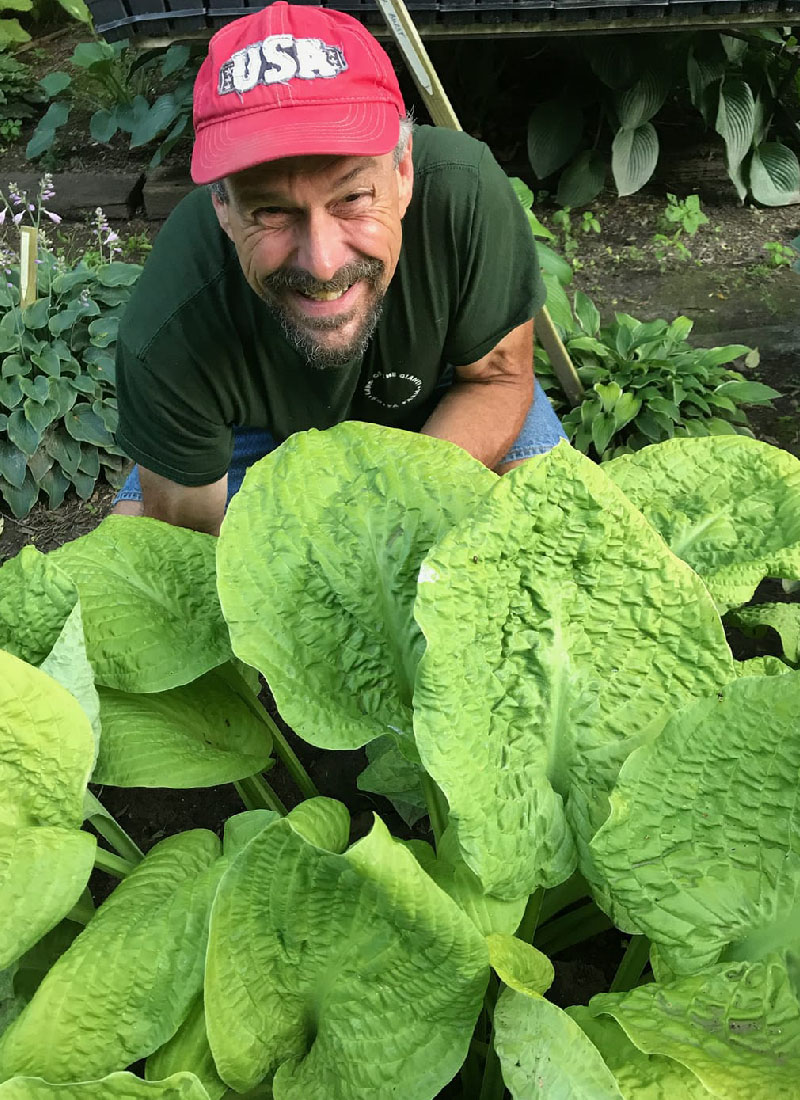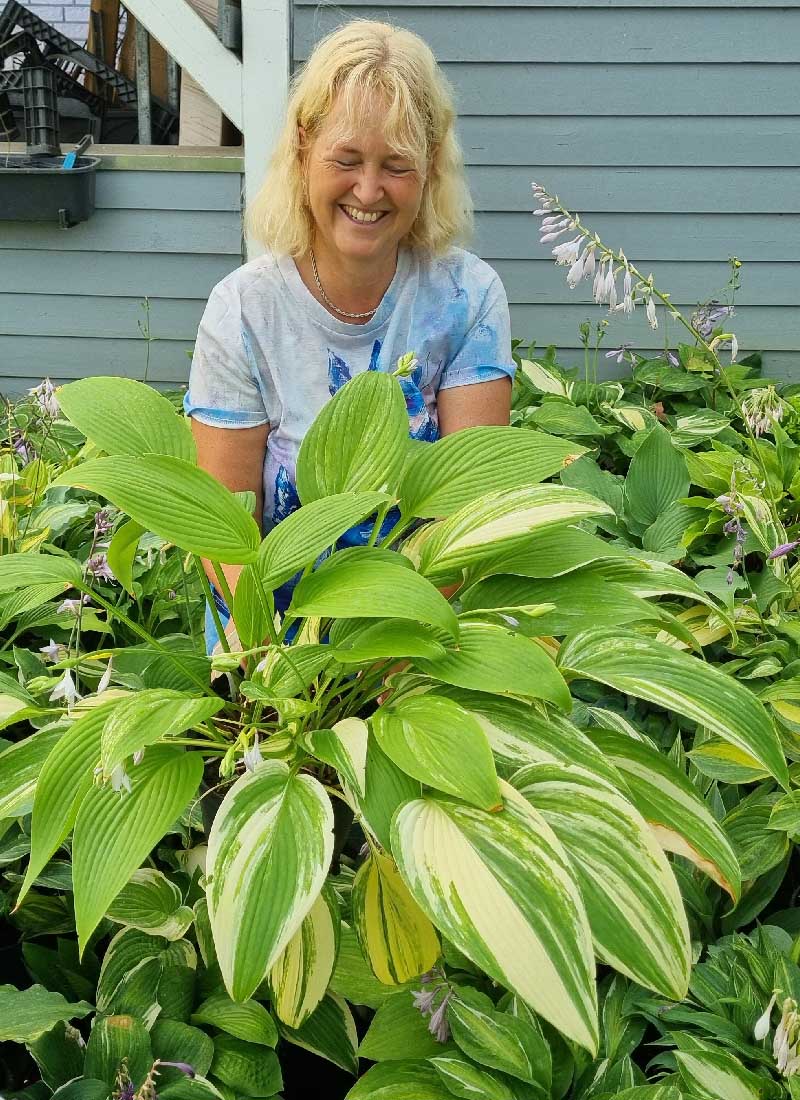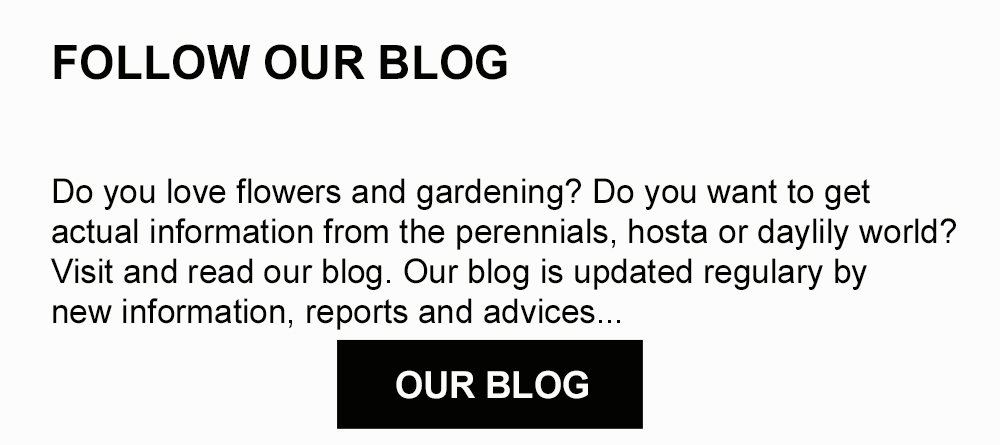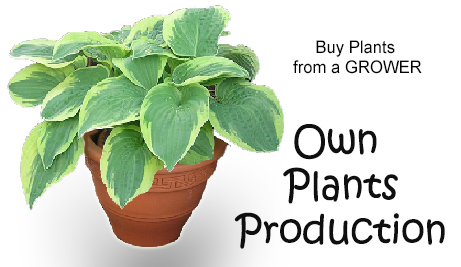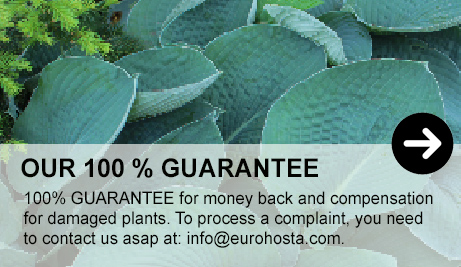Hosta Mata Hari
- Plant Size:
- Large
- Flower Color:
- Lavender
- Product Code:
- H300
- Supplied as:
- bare roots
Availability: In stock
- Buy 3-4 for €5.69 each and save 6%
- Buy 5 or more for €5.39 each and save 11%
Hosta 'Mata Hari' is another wonderful cultivar coming from hosta 'Striptease'. Recently, many of them have appeared on the market, like for example hosta 'Alan Titchmarsh', 'Gypsy Rose', 'Mata Hari', 'Snake Eyes', 'T-Dawg' and many more. The individual quality of each cultivar coming from striptease has to be evaluated… Differences between some cultivars are relatively minor… Hosta 'Mata Hari' has broad creamy center and strong blue and green edges. There is narrow white strip between the light and the dark center of the leaves. Grows well as all cultivars that come from hosta 'Striptease'. We have planted hosta 'Mata Hari' for several years and grows nicely and vital and has a slightly more yellow arrange center as the "Gypsy Rose".
How to grow hostas
Save light shade to shade place in your garden to plant hostas. Filtered sun is best for the colorful varieties to reach their full color contrast. The green and blue hostas are the most shade-tolerant. Usually the yellow cultivars are the most sun-tolerant. The most dangerous is a direct sunshine, especially hot afternoon sun. This is the most critical where temperatures are high. Variegated varieties, especially those with a lot of white in the leaves, burn very easily. Blue color of leaves turns to green-blue or even fully green with too much direct sun. Plants with thick leaves are better suited for dry soil conditions than thin-leaved ones, but none is able to grow years-long in very dry soil. Plant hostas in moist, humus-rich soil.
Water your hostas well immediately as you plant them. Give them water regularly during their first one or two growing season.
Hostas grow slowly and may take 2 to 5 years to reach their full size, longer for the largest species and cultivars. Reserve a plenty of space in your perennial bed for hostas. Most of them are medium sized or large perennials. Hostas are almost fully disease and pest resistant. The most dangerous injury can by caused by slugs, snails and deers.
| Plant Size | Large |
|---|---|
| Spacing (h x w) | 60 x 70 cm |
| Leaf Size | 18 x 15 cm |
| Growth Rate | Medium |
| Leaf Color | No |
| Leaf Color (Center) | Yellow |
| Leaf Color (Margin) | Green |
| Red "legs" | No |
| Slug Resistant | No |
| Sun Tolerant | Yes |
| Flower Color | Lavender |
| Wavy Leaf | No |
| Flower Fragrance | No |
| Sun Exposure | Partial Shade |
| Hybridized by | Strandberg |
| Year of Registration | 2010 |
| Supplied as | bare roots |
| YT Video | No |
| Bohemia | No |
| Valley's | No |
| Hanjas | No |
| Asian | No |
| Giantland | No |
- erste Bewertung
-
Mata Hari steht seit einigen Jahren an ziemlich sonniger Stelle. Hat einen schönen Habitus ausgebildet, verbrennt nicht, blüht zuverlässig. Ein sehr schöne, robuste und auffällige Hosta. (Posted on 5/4/20)Price Quality Usefulness - hosta
-
Dear Dana, yesterday I received the hostas in good order. The plants are very healthy. Thanks for the extra plants, which is very good for our recently started collection of species hostas in our botanical garden. (Posted on 9/17/17)Price Quality Usefulness
No video available.

